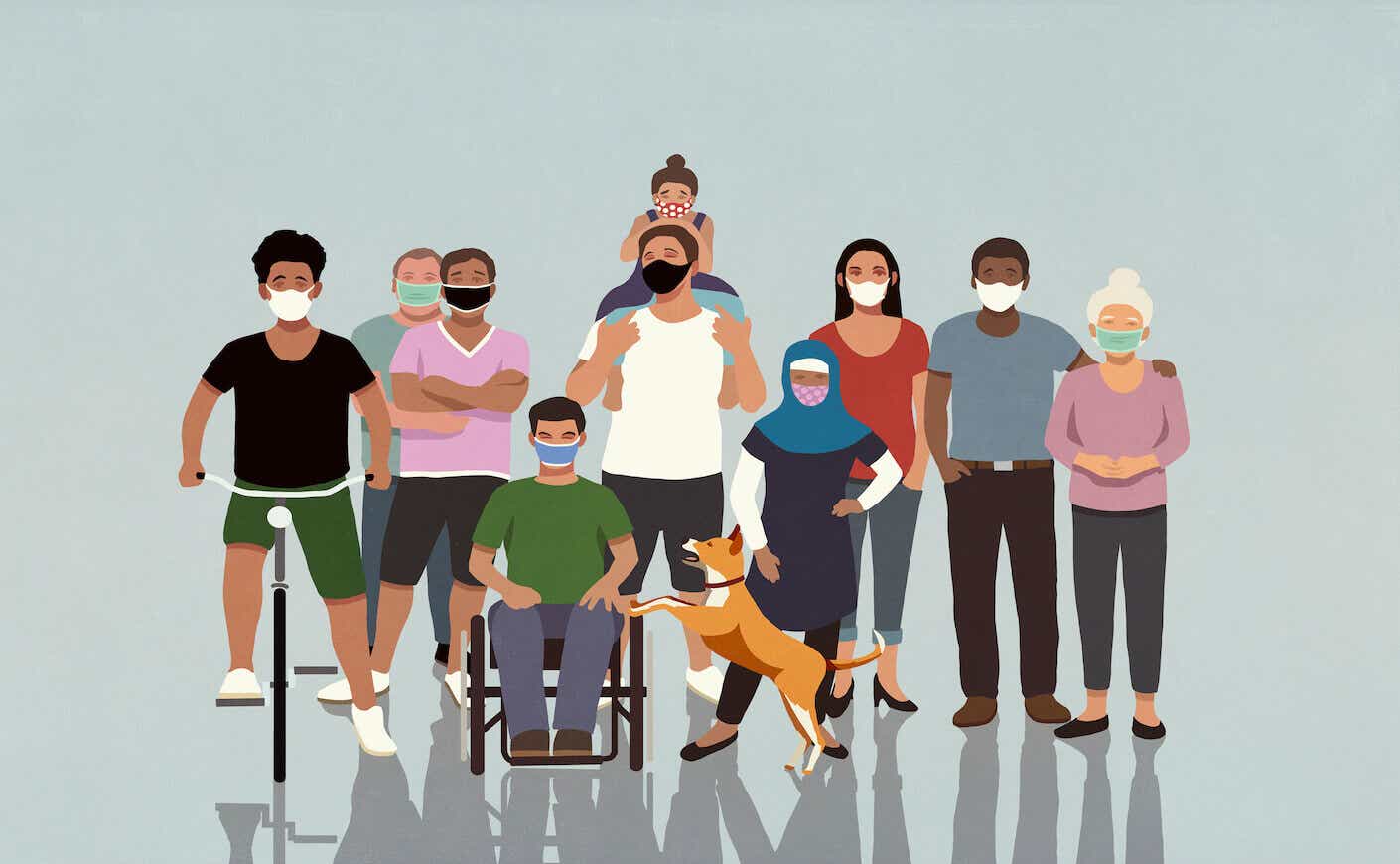Across the country, stadiums and concert venues are once again hosting capacity crowds, restaurants are packed, and airports are seeing pre-pandemic-level summer vacation traffic. Despite hopeful signs of normalcy returning, the COVID-19 pandemic isn’t yet something we can put behind us. The highly contagious Delta variant is spreading fast, and cold and flu season is around the corner.
Unfortunately, the United States is falling short of its goals for vaccination rates and the pace of vaccine uptake has slowed considerably since the spring. And unvaccinated people account for nearly all recent COVID-19 deaths, showing that it’s more important than ever to encourage people to get their shots.
We can’t afford to let this call to get vaccinated go unheeded, especially for Black and Brown communities that’ve been disproportionately impacted by COVID. Despite the fact that Black, Latinx and Native Americans are two to three times more likely to die from the virus than their white counterparts, these communities also received smaller shares of vaccinations relative to their case counts and population size in most states. This structural inequity is just one example of the many barriers communities of color face when it comes to the COVID-19 vaccine.
It is important to note the difference between vaccine access and vaccine hesitancy. While communities of color may experience both, a recent Bloomberg study found that Republicans and white evangelicals are the most likely to be hesitant to get the shot.
Access barriers, more so than hesitancy, are why vaccination rates in communities of color are trailing majority white areas. Humana is working to address these barriers with a three-tiered approach: comprehensive understanding, innovative partnerships, and tailored interventions.
Understanding social and structural barriers
The first step to bridging these vaccination gaps is understanding current and historic social and structural barriers to health care, such as lack of sufficient internet access or inconsistent transportation. Throughout the pandemic, Humana conducted personal outreach to individuals to check in and help them address their basic needs — like food — so they could focus on staying safe and healthy. As COVID-19 vaccines became available, we personally called more than one million people, learning from our members themselves what barriers they were encountering. From there, we were able to provide the most effective assistance and tools to help get our communities vaccinated.
Forming partnerships to address access disparities
Another key to bridging vaccination gaps is partnership. This spring, we worked with the White House and our industry trade organization – America’s Health Insurance Plans, or AHIP – to deliver COVID-19 vaccines to the most at-risk communities as quickly as possible, successfully vaccinating more than two million seniors in less than 100 days.
In Louisville, Kentucky, we were able to take our efforts one step further by opening a vaccine clinic in collaboration with public partners like the Kentucky Commission of Public Health and private partners like Norton Healthcare. In just a few weeks, our team administered nearly 3,000 COVID-19 vaccinations to individuals who live in one of the 10 most socially vulnerable ZIP codes in Louisville.
Designing interventions that meet community needs
Finally, improving vaccine access requires creative interventions that challenge traditional notions of care. After learning how many West Louisville residents had trouble accessing vaccines due to lack of internet access, Humana invested in Older Adults Technology Services (OATS), funding a project that focuses on getting at least one million disconnected seniors online, particularly those in marginalized communities.
Many other health care settings outside of Humana have also expanded access to care by accepting walk-in patients, providing childcare and transportation for vaccine visits, and offering evening and weekend appointments. Such changes can make a world of a difference for many people.
During the pandemic, we’ve learned invaluable lessons about health equity at Humana. We know now that addressing systemic health inequities in this country will take time, but it cannot happen without a collaboration and commitment from everyone in the public health community. Through a joint commitment to this three-pronged approach — understanding, partnership, and tailored intervention — we have the power to make a difference and help defeat this virus.









